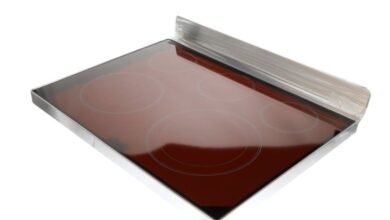Understanding CMOS: The Heart of Modern Electronics

Introduction
Ever wondered how your smartphone, computer, or even your smartwatch works so efficiently? The answer lies in a small but incredibly powerful technology known as CMOS. Whether you’re a tech enthusiast or just curious about how your devices tick, this blog post will give you a simple and clear understanding of CMOS, why it’s essential, and how it impacts the gadgets we use every day.
In this blog post, we’ll break down what CMOS is, how it works, and its importance in the world of electronics. By the end, you’ll have a solid grasp of this fundamental technology that powers so much of the modern world.
What is CMOS?
CMOS stands for Complementary Metal-Oxide-Semiconductor. Sounds complex, right? Let’s simplify it. CMOS is a technology used to build integrated circuits, which are the building blocks of almost all modern electronic devices. These circuits are found in everything from your smartphone to your laptop, making them critical to the function of these gadgets.
How Does CMOS Work?
At its core, CMOS technology works by using a combination of two types of transistors: N-type and P-type. These transistors work together to control the flow of electricity in a circuit. What makes CMOS special is its ability to reduce power consumption significantly. Unlike other technologies, CMOS only uses power when switching between states (from 0 to 1 or vice versa). This makes CMOS ideal for battery-powered devices like smartphones and laptops, where energy efficiency is crucial.
Why CMOS is Important in Modern Electronics
CMOS technology is not just another component; it’s the backbone of modern electronics. Here’s why:
- Low Power Consumption: As mentioned, CMOS consumes very little power, which extends battery life in portable devices. This is why your smartphone can last all day on a single charge.
- High Efficiency: CMOS circuits can operate at high speeds while consuming minimal energy, making them perfect for fast, efficient computing.
- Cost-Effective: Producing CMOS circuits is relatively inexpensive, which helps keep the cost of electronic devices down.
- Compact Size: CMOS technology allows for the creation of tiny yet powerful circuits, enabling the production of compact devices like smartphones, tablets, and wearables.
Applications of CMOS Technology
CMOS technology is everywhere, and its applications are vast. Here are some common uses:
- Microprocessors: The brain of your computer or smartphone is a microprocessor, which is built using CMOS technology. This allows it to perform billions of calculations per second while consuming minimal power.
- Image Sensors: If you’ve ever taken a photo with your smartphone, you’ve used a CMOS image sensor. These sensors convert light into digital data, allowing your device to capture high-quality images.
- Memory Chips: CMOS is used in creating memory chips, which store data in your devices. This includes everything from RAM in your computer to flash memory in your USB drive.
- Analog and Digital Circuits: CMOS technology is used in both analog and digital circuits, making it versatile for various electronic applications.
CMOS vs. Other Technologies
While CMOS is incredibly popular, it’s not the only technology out there. Let’s compare CMOS with a few others:
- Bipolar Junction Transistors (BJT): BJTs were widely used before CMOS. They consume more power and generate more heat, making them less suitable for modern, power-efficient devices.
- TTL (Transistor-Transistor Logic): TTL was another popular technology before CMOS. However, it’s bulkier and consumes more power, making CMOS a better choice for today’s compact and energy-efficient devices.
- FinFET: This is a more recent technology that offers even better performance and power efficiency than traditional CMOS. However, CMOS remains widely used due to its cost-effectiveness and maturity in the market.
The Future of CMOS Technology
CMOS technology has been around for decades, but it’s far from outdated. Researchers are continually finding ways to improve CMOS, making it even more efficient and powerful. As we move into an era of even more compact and energy-efficient devices, CMOS will likely remain a key player in the world of electronics.
Innovations like 3D stacking, where CMOS circuits are layered on top of each other, are pushing the boundaries of what’s possible. Additionally, CMOS is being integrated with other technologies like MEMS (Micro-Electro-Mechanical Systems) to create even more versatile and powerful devices.
Conclusion
CMOS is the unsung hero behind much of the technology we use today. From your smartphone’s processor to the camera that takes your selfies, CMOS is at the heart of it all. Its low power consumption, high efficiency, and cost-effectiveness make it a cornerstone of modern electronics.
Understanding CMOS not only gives you insight into how your devices work but also highlights the incredible advancements in technology that we often take for granted. As you continue to use your gadgets, remember the crucial role CMOS plays in making them possible.
FAQs
- What does CMOS stand for? CMOS stands for Complementary Metal-Oxide-Semiconductor.
- Why is CMOS important? CMOS is important because it enables the creation of energy-efficient, cost-effective, and compact electronic devices.
- What are the main applications of CMOS? CMOS is used in microprocessors, image sensors, memory chips, and both analog and digital circuits.
- How does CMOS differ from other technologies? Unlike older technologies like BJT and TTL, CMOS consumes less power and is more efficient, making it ideal for modern electronics.
- What is the future of CMOS technology? The future of CMOS involves innovations like 3D stacking and integration with other technologies to create even more powerful and efficient devices.
- Is CMOS still relevant today? Absolutely! Despite being a mature technology, CMOS continues to be widely used and is constantly being improved for future applications.
And make the links which are included in the “Custom Message” Clickable on All devices.



